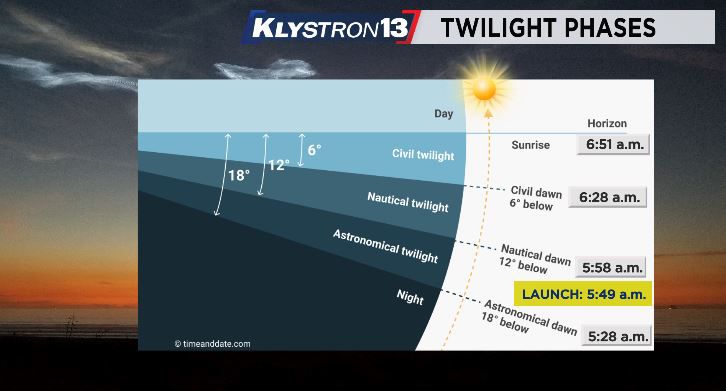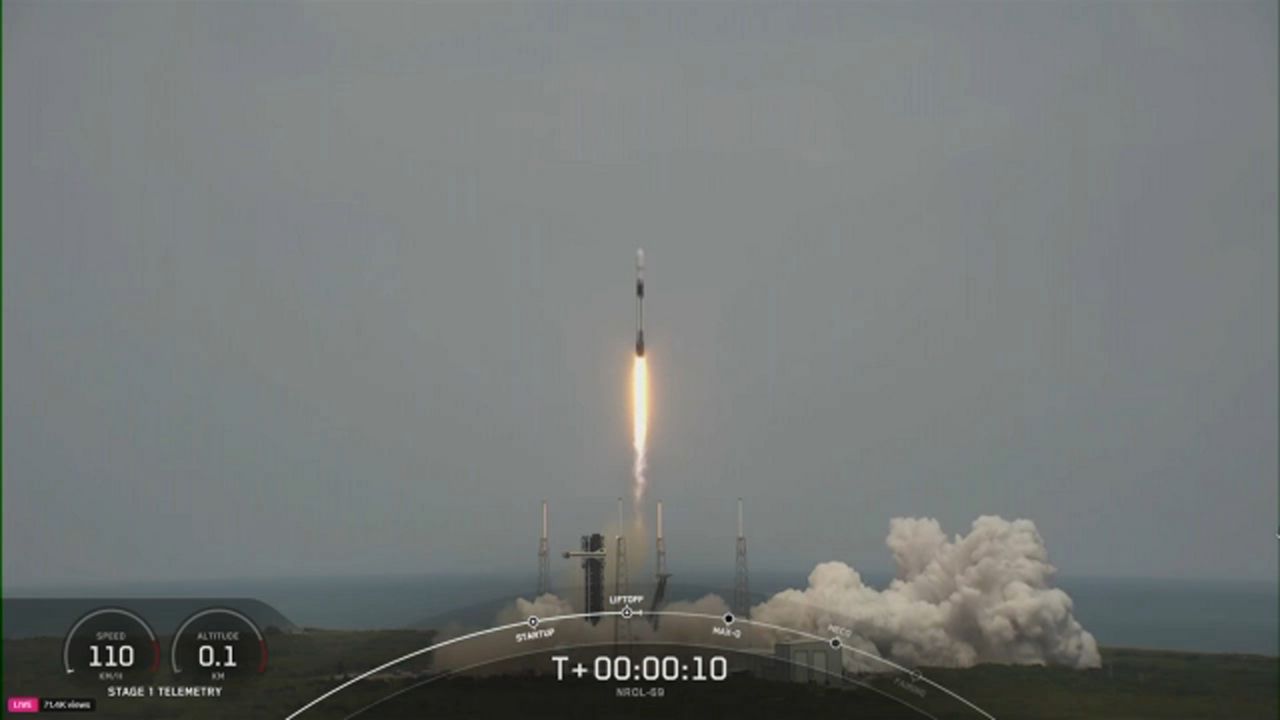KENNEDY SPACE CENTER — Four astronauts are now headed to the International Space Station on board a SpaceX Falcon 9 rocket following a pre-dawn launch from Kennedy Space Center.
What You Need To Know
- This is the second rotational manned mission to the ISS for SpaceX
- The team launched on a rocket with "flight-proven" hardware on board
- Meet the SpaceX Dragon Crew-2 team: NASA's Shane Kimbrough | ESA's Thomas Pesquet | JAXA's Akihiko Hoshide | NASA's Megan McArthur
The rocket included a refurbished first stage booster, which was used to launch the Crew-1 mission back in November. SpaceX the booster returned to Earth successfully after separation, landing on the droneship "Of Course I Still Love You". The Dragon capsule that Crew-2 is now riding to the ISS was also refurbished from last year's Demo-2 mission.
SpaceX is using refurbished hardware to help bring down the cost of the missions.
ANOTHER LOOK: @SpaceX #Falcon9 bolts off @NASAKennedy Pad 39A beginning @NASA @Commercial_Crew #Crew2 mission Friday morning. Video = GP cam. @MyNews13 #News13Brevard #Florida @45thSpaceWing @Jon_Shaban pic.twitter.com/xjjD6OmjIS
— Greg Pallone (@gpallone13) April 23, 2021
After the successful launch, NASA Commercial Crew Program Manager Steve Stitch attributed the achievement to good communication over the past several months.
"At times during these meetings, people would finish each others' sentences," said Stitch. "Someone on the Space X side says something, and someone with NASA knows exactly what that person is thinking."
A tired Space X CEO Elon Musk says after a sleepless night, he still sees flight day as an intense experience.
"It's hard to believe we are here doing this, it feels like a dream," Musk said.
NASA astronauts Shane Kimbrough and Megan McArthur, plus Japan Aerospace Exploration Agency's Aki Hoshide and European Space Agency's Thomas Pesquet, plan to spend six months on the ISS.
The four astronauts arrived from Houston to the Kennedy Space Center a week ago and have been prepping for the journey to the International Space Station.
Commander Kimbrough spoke of the camaraderie his team has developed during their training.
“I've spent a lot of time with these folks, and we've gotten to be really good friends, which is only going to play out further on the space station,” he said.
Also heading up on the mission is a big upgrade to the orbiting outpost's solar power system.
A tissue chip experiment will be conducted and scientists hope by studying the chips in the microgravity environment that it will help develop safe vaccines for people here on Earth.
Once Crew-2 arrives, there will be 11 astronauts on board the ISS. NASA says adding more people means more time for scientific research.
Crew-2 will spend six months in orbit and will come home with an Atlantic Ocean splashdown.
'The Jellyfish Effect'
People who watched the launch from the Space Coast or from their own backyards may have also seen this phenomenon we sometimes call "The Jellyfish Effect."
VIDEO: Did you see this phenomenon we've been calling the "Jellyfish Effect" during this morning's SpaceX Falcon 9 crew launch? We take a look at what caused it: https://t.co/hOJ44o4j8x pic.twitter.com/46mtAg3mgx
— Spectrum News 13 (@MyNews13) April 23, 2021
This effect is a bit of an astronomical phenomenon.
The sun had not yet entered our horizon when the launch happened at 5:45 a.m., but we were in what is known as "astronomical twilight".

So while we couldn't see the sun, it was close enough that the higher the rocket climbed in the sky, the greater the chance the sun's light would illuminate the rocket's contrails.
So when the first stage booster separated, the sun's light hit the plume, causing that amazing effect in the sky that could be seen all the way out to the Tampa bay area.









